
- Home
- India
- World
- Premium
- THE FEDERAL SPECIAL
- Analysis
- States
- Perspective
- Videos
- Sports
- Education
- Entertainment
- Elections
- Features
- Health
- Business
- Series
- In memoriam: Sheikh Mujibur Rahman
- Bishnoi's Men
- NEET TANGLE
- Economy Series
- Earth Day
- Kashmir’s Frozen Turbulence
- India@75
- The legend of Ramjanmabhoomi
- Liberalisation@30
- How to tame a dragon
- Celebrating biodiversity
- Farm Matters
- 50 days of solitude
- Bringing Migrants Home
- Budget 2020
- Jharkhand Votes
- The Federal Investigates
- The Federal Impact
- Vanishing Sand
- Gandhi @ 150
- Andhra Today
- Field report
- Operation Gulmarg
- Pandemic @1 Mn in India
- The Federal Year-End
- The Zero Year
- Science
- Brand studio
- Newsletter
- Elections 2024
- Events
Royal Cuisine: How dishes from Thanjavur Maratha King Serfoji's kitchen can land on your plate

Thirty-year-old Pratap Sinh Serfoji Raje Bhosale and his mother, Ayshwarya Serfoji Raje Bhosale, include at least one ‘royal dish’ in their daily meals to keep the culinary history of the Thanjavur Marathas alive. Pratap, the sixth descendant of King Serfoji II, who ruled the Thanjavur region in the early 18th century and whose 247th birth anniversary was celebrated yesterday (September...
Thirty-year-old Pratap Sinh Serfoji Raje Bhosale and his mother, Ayshwarya Serfoji Raje Bhosale, include at least one ‘royal dish’ in their daily meals to keep the culinary history of the Thanjavur Marathas alive. Pratap, the sixth descendant of King Serfoji II, who ruled the Thanjavur region in the early 18th century and whose 247th birth anniversary was celebrated yesterday (September 24), aims to preserve the historical dishes served in the Thanjavur fort by sharing details on social media.
King Serfoji II is the most famous ruler among the Maratha leaders of Thanjavur. He left his mark in various fields, including medicine, education, science, dance, and culinary arts. His expertise and plans are recorded in hundreds of manuscripts, safely preserved in Sarasvati Mahal Library in the Thanjavur palace.
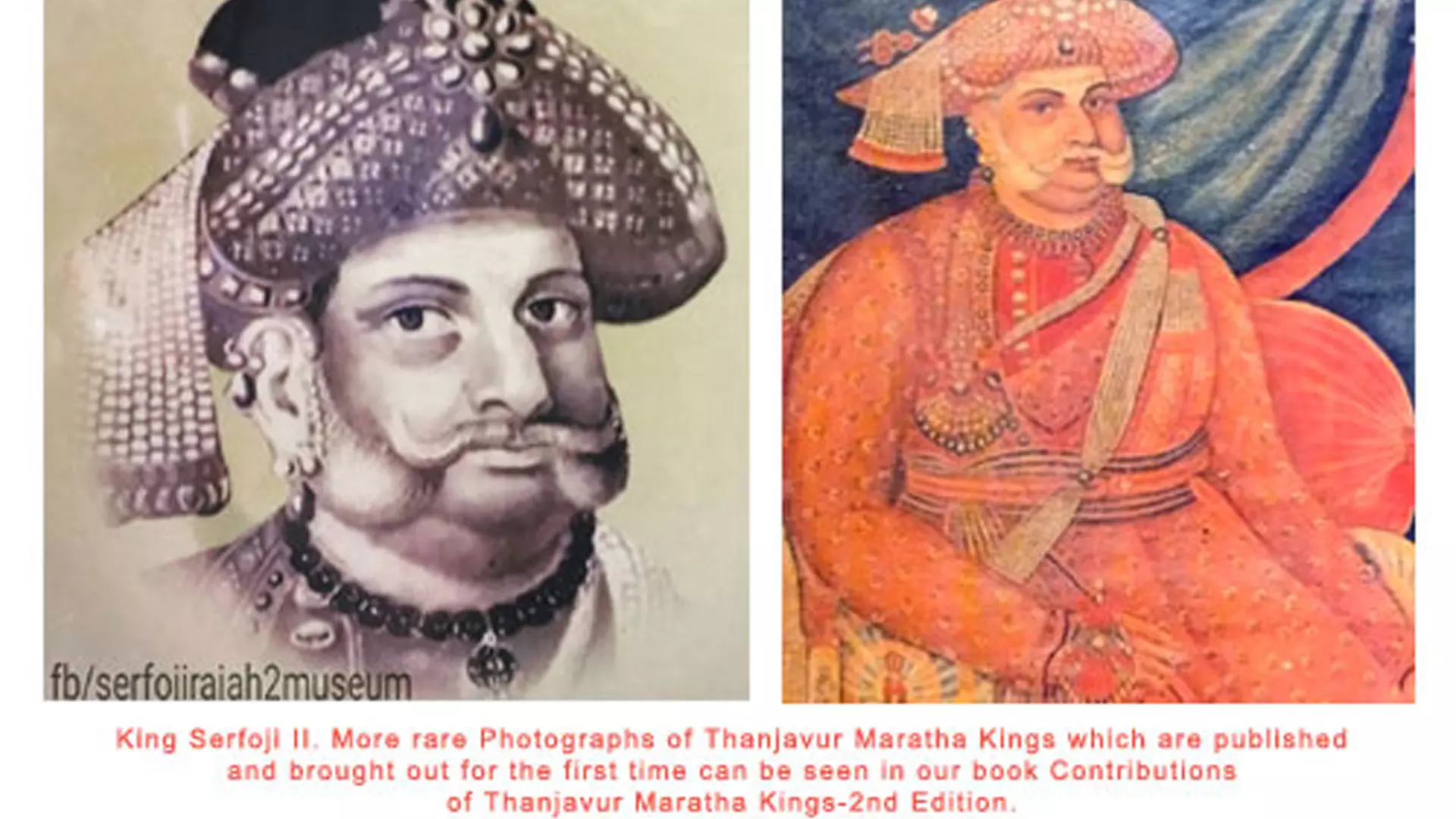
Historical records indicate that King Serfoji II, a food connoisseur, established three main kitchens: Maratha (non-vegetarian), Brahminical (vegetarian), and Angreji (European), along with smaller kitchens for refreshments like sherbet and milk. An exclusive post, ‘Halwayee-Master’ (sweet-meat maker), was dedicated to the person preparing sweet delicacies like laddus and halwa.
Over 1,000 varieties of dishes from his regime were meticulously recorded in manuscripts, detailing measurements and methods in a recipe format. These recipes can be found in the Sarabendra Pakashastra, a book that has been published in three editions since 1980. Pratap recently led a marketing campaign for this book, popularising the forgotten recipes.
While sharing insights about the food history of the Thanjavur Marathas, Pratap and Ayshwarya cooked a vegetarian and a non-vegetarian dish for The Federal in their bungalow in Chennai.
“The royal kitchens were elaborate. King Serfoji II incorporated traditional Maratha dishes and enjoyed local Tamil flavours. The menu was designed based on seasons and festivals, with royal tasters ensuring the food was both tasty and safe,” recalls Ayshwarya.
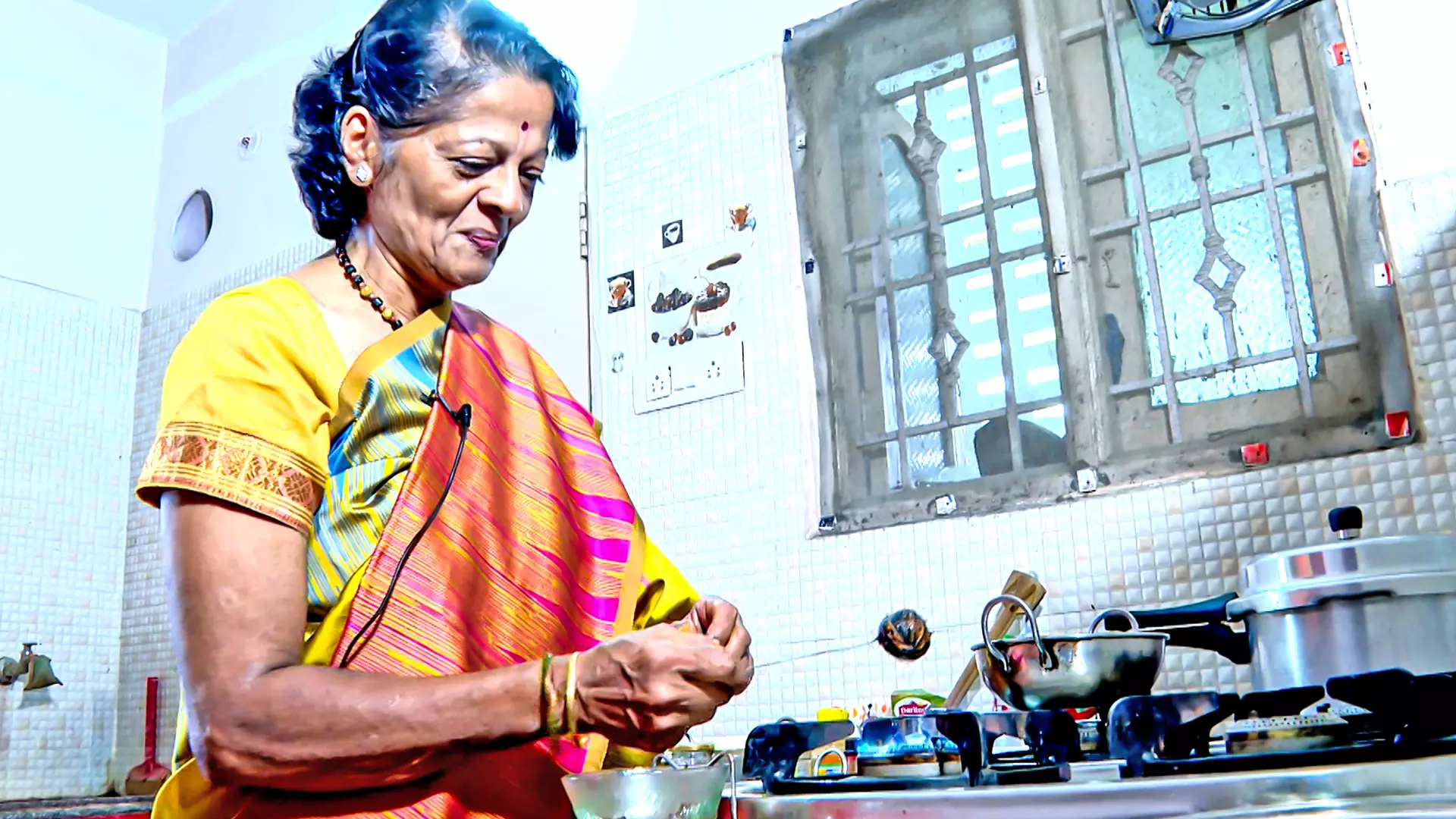
Ayshwarya Serfoji Raje Bhosale making Mutton Sunkti balls.
Armed with ladles, Pratap and Ayshwarya prepared Sunkti, a traditional mutton meatball that was an important delicacy during festivals, and Sandage, made from Bengal gram, which pairs well with rice for lunch. The spicy taste of Sunkti and the aroma of Sandage activated the taste buds for Thanjavur Maratha cuisine. They shared recipes, measurements, and the historical significance of the dishes during their cooking session.
Describing the preparation of Mutton Sunkti, Ayshwarya said the meatball was considered a traditional signature dish during King Serfoji II period and has been passed down through generations.
“To make this dish, we fry the mutton in pure cow ghee until it turns golden brown. Then it is finely ground and set aside. Various spices like green cardamom, cinnamon, cloves, chilies, poppy seeds, and garam masala are roasted and ground into a fragrant powder. This spice mixture is added to the meat along with turmeric powder, small pieces of ginger, garlic, and coconut slices. The final touch is a generous squeeze of lemon for a tangy taste,” Ayshwarya shared while shaping the mixture into balls and tying each one with plantain threads to retain its shape.
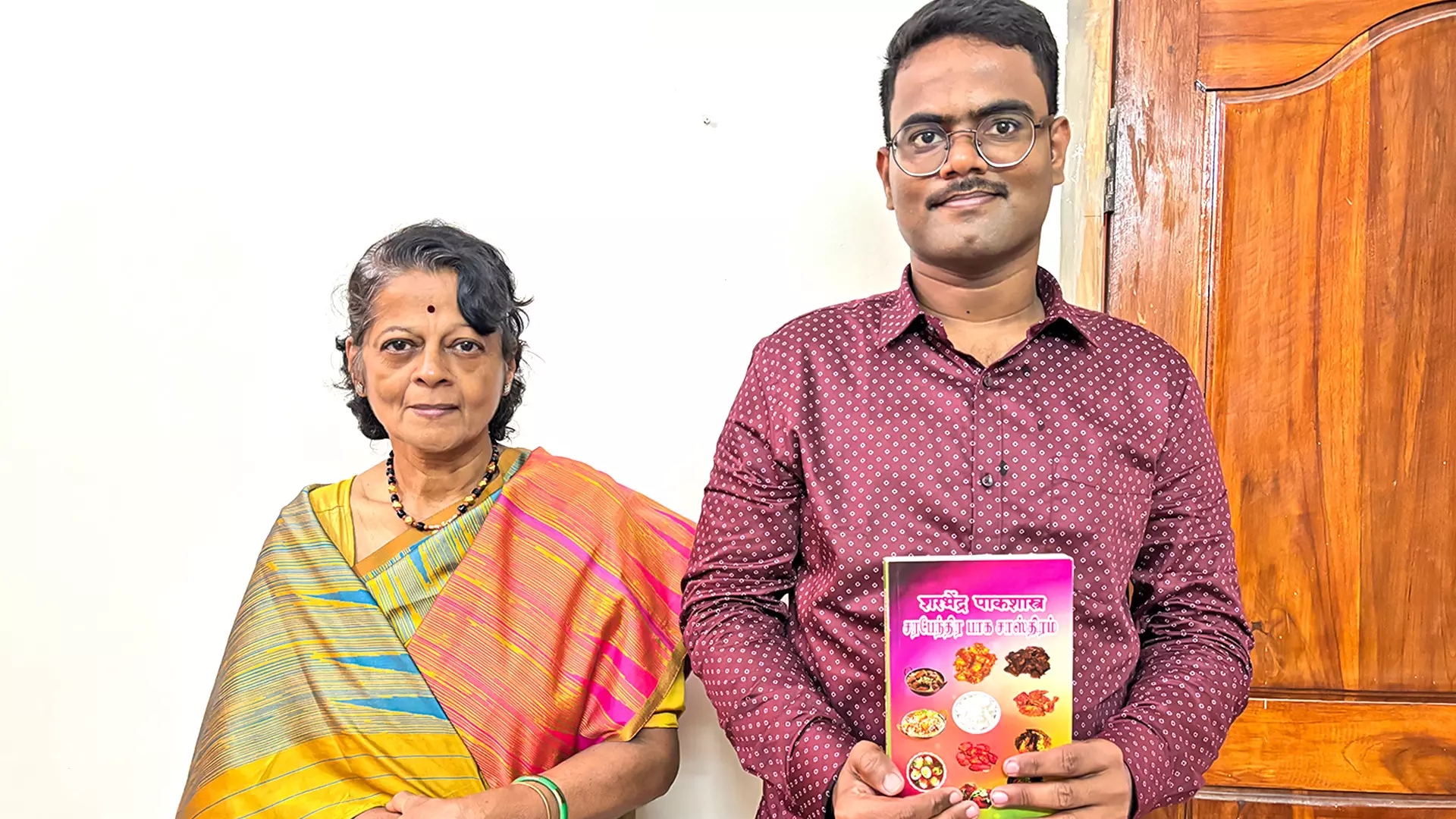
Pratap Sinh Serfoji Raje Bhosale and his mother, Ayshwarya Serfoji Raje Bhosale with the reference cookbook that carries over 100 recipes cooked during Serfoji II's reign.
Ayshwarya roasted the meatballs gently over an open fire, tossing them constantly to ensure even cooking. She added ghee as needed to keep them moist. “Records indicate that the chilies used for these meatballs were sourced from Rajasthan, particularly a variety known as Mathania, for its strong pungent heat. We have tried our best to recreate the same flavour,” she said, sprinkling a little water to ensure the mutton balls stayed moist.
Sunkti is a recipe steeped in tradition, and while complex, it rewards with unforgettable flavours from a bygone era, says Pratap. He added that the notes left by chefs contained detailed information on how they made pickles with mutton, chicken, prawns, and even vegetables like carrots and plantain flowers.
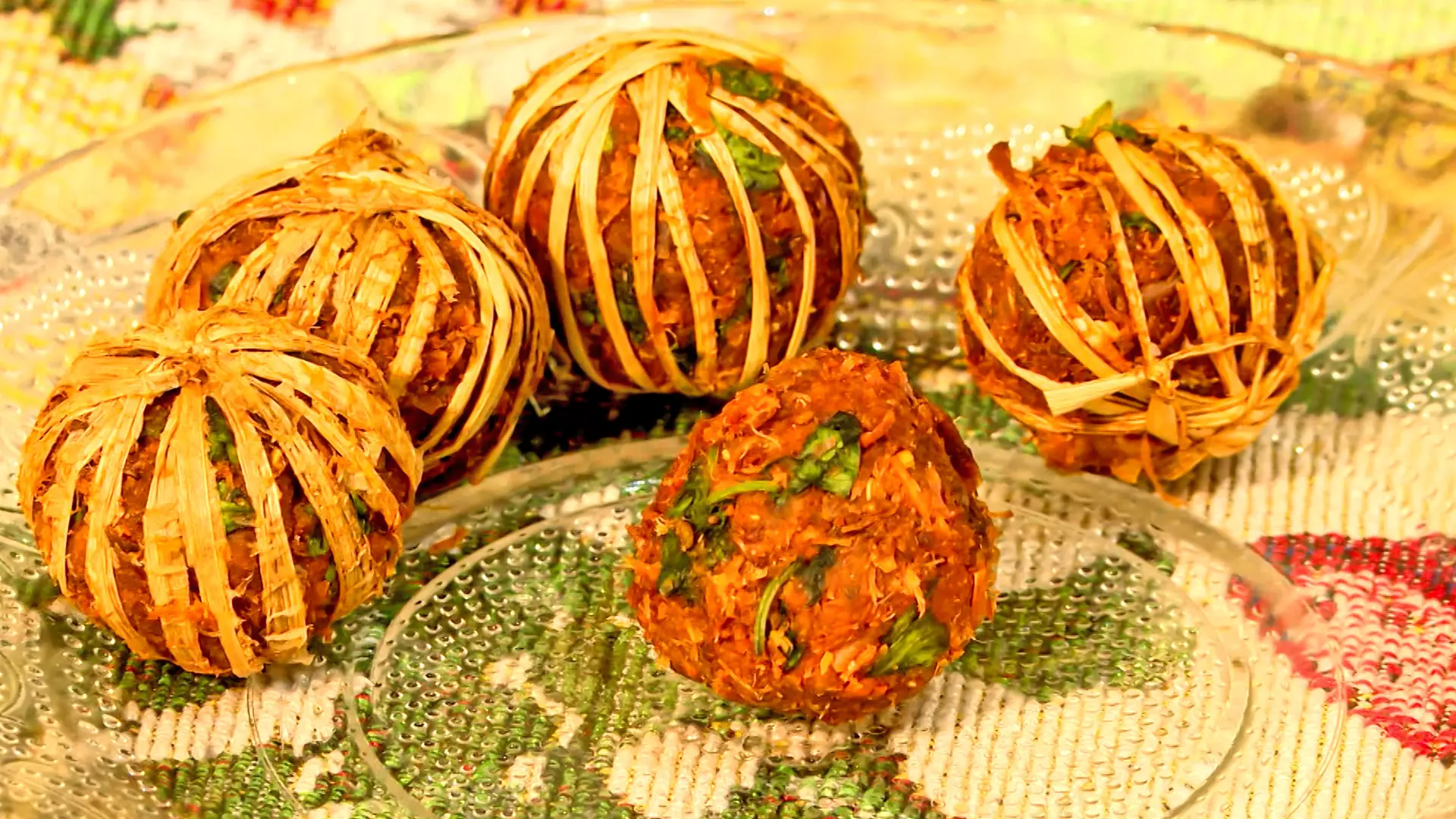
Mutton Sunkti.
During the COVID lockdown, Pratap noticed innovative cooking videos gaining traction on social media. He started an Instagram page, Annalakshmi’s Kitchen, to share historic recipes and even launched a cloud kitchen with his mother’s help. Pratap has authored three books on the history of the Thanjavur Marathas, but he believes the social media page allowed him to reconnect with his culinary heritage quickly. The second edition of his book on Thanjavur history is a bestseller, with 631 copies sold to date.
“My Instagram page, Annalakshmi’s Kitchen, has gained good traction, and we received orders for our signature dishes, including chicken and mutton recipes. I have shared over 200 recipes on the page for others to try, including desserts and dishes from my mother,” he said. A star hotel in Maharashtra even invited them to host a food festival on Thanjavur royal cuisine, and the response was overwhelming.
Discussing measurements and utensils used in the royal kitchen, Ayshwarya explains that measurements were quite different in the 18th century. Ayshwarya has kept two big vessels at her Chennai house which were used during Serfoji II period.
“Ingredient measurements were based on the weight and measurement system prevalent in those days in Thanjavur. Tola, palam, and padi were commonly used; for example, one tola is approximately 10 grams, and 12 tolas make a palam. One padi equals 750 grams. Some recipes also used pounds as a measure. The vessels in the kitchens were enormous, and many are too heavy to lift today. I’ve been experimenting with different recipes for the last 28 years, and there’s no looking back,” she shares excitedly.
On the question of European kitchen that operated during King Serfoji II's reign, she said, “The European kitchen had a Western flair, producing jellies, wafers, and puddings. Manuscripts detail soups, puddings, jellies, pancakes, and wafers prepared for the king and visiting Englishmen.”
Ayshwarya also recounts that while biryani is popular in Tamil Nadu today, there were four types of biryani and seven types of pulao served in the royal kitchen. “I’ve perfected a couple of traditional curry and biryani recipes, including sweet biryani, which we cook during festivals. Sandage and red pumpkin are authentic dishes we enjoy and prepare for guests,” she noted.
She mentioned that during King Serfoji II's time, curd rice and rasam rice were staples, available almost daily in the fort, along with a variety of fish dishes. The records indicate several methods for making simple fish curry and special pickles for the royal family.
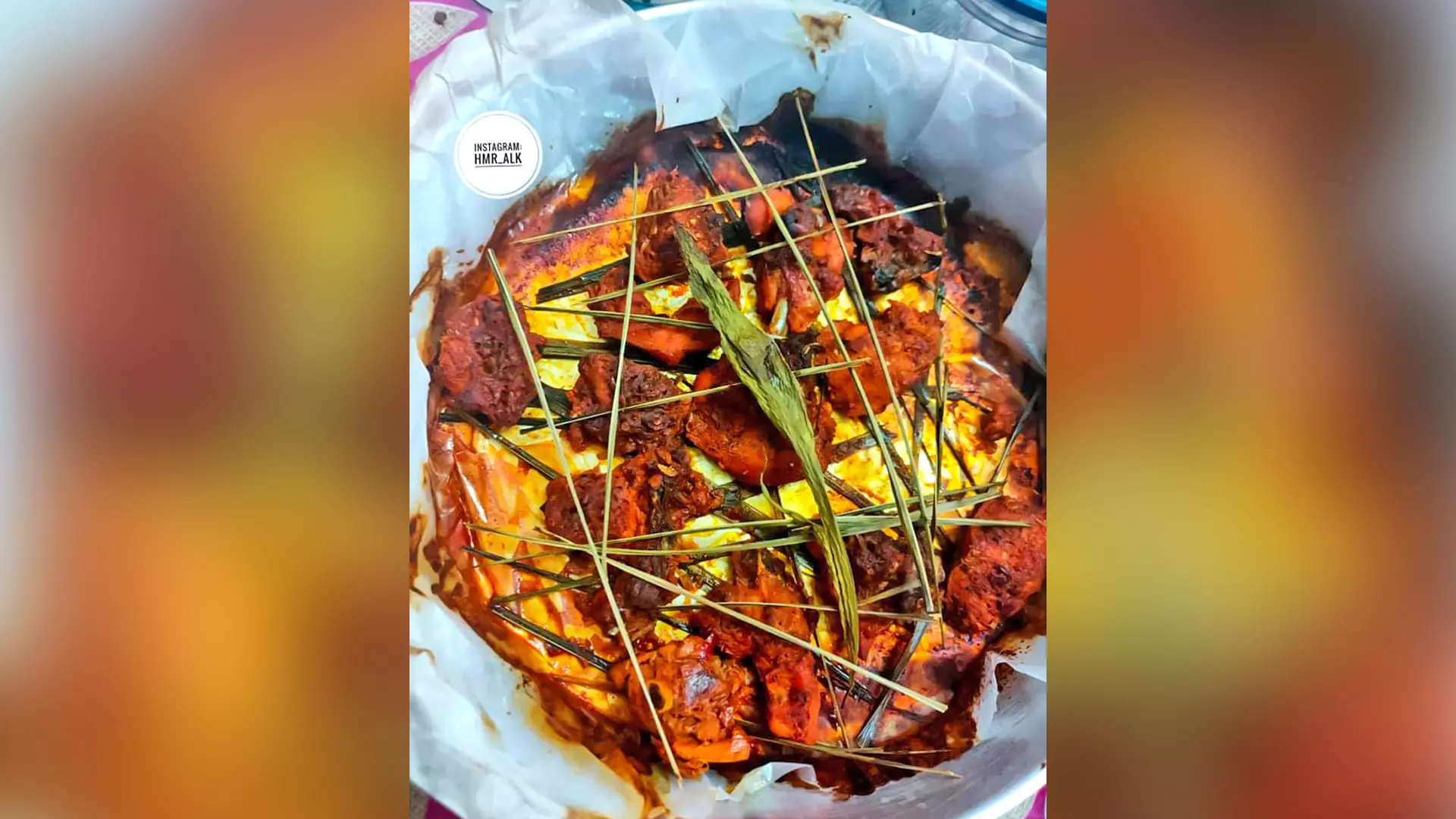
A baked herbal chicken dish prepared in Pratap’s kitchen.
When it comes to food, beef was strictly off the menu of the Serfoji period. They had also limited the usage of black pepper, which was used sparingly but other species like cinnamon, cardamom, cumin seeds and many were stored in the kitchens with care.
